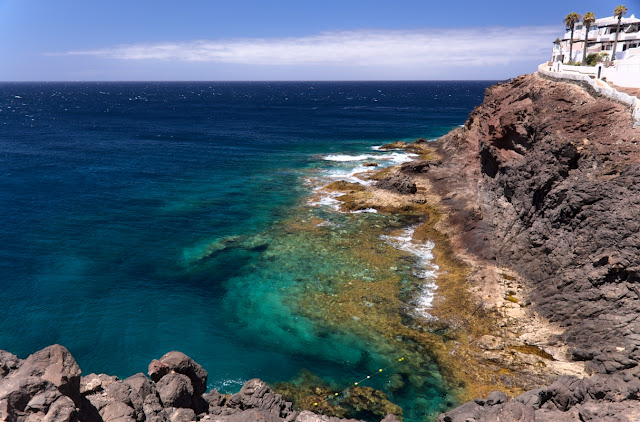 |
| Amazing color of the Yellow Mountain, Montaña Amarilla |
The last time me and Timur went to La Graciosa, the smallest of the inhabited Canary Islands, we only went as far as Playa Francesa, sheltered cove beach where many leaisure vessels anchor for an hour or so. We were not impressed: it was crowded, and there was a pink floating inflatable slide in the water, great way of spoiling beautiful landscape.
This time we wanted to walk a bit more, to get away from the masked crowds, and to try to see the other islands of Chinijo Archipelago from the north shore of La Graciosa. As mentioned in the first post, walking on La Graciosa is not a problem if you don’t mind sand and heat. Distances are ridiculously small and there is no vegetation, so you basically always see where you are and where to go.














